Knowing how to prepare for a winter storm can make all the difference. If you’re prepared, you and your loved ones will be able to ride out the storm in relative comfort, even if the power goes out. However, for someone who isn’t ready and doesn’t prepare, a winter storm can be a terrible ordeal. Ideally, preparing for a storm is something that should have started a long time ago, and continued throughout the year. There are things that you can do, which can make a huge difference, but which will require advanced planning and implementation.
[the_ad_placement id=”in-text-1-type-r”]At the same time, there will also be final preparations which will kick in as the storm approaches. It will also be important to maintain vigilance while your area is bearing the brunt of the storm. It will only be possible to truly relax once the storm has finally passed, without causing any injuries or ill effects.
In addition to the specific steps that should be followed, there are also the basic guidelines for survival situations. Know where everybody is. Every person should know what his or her role is, where they should hunker down, how to communicate and what the various contingencies are in case something goes wrong.
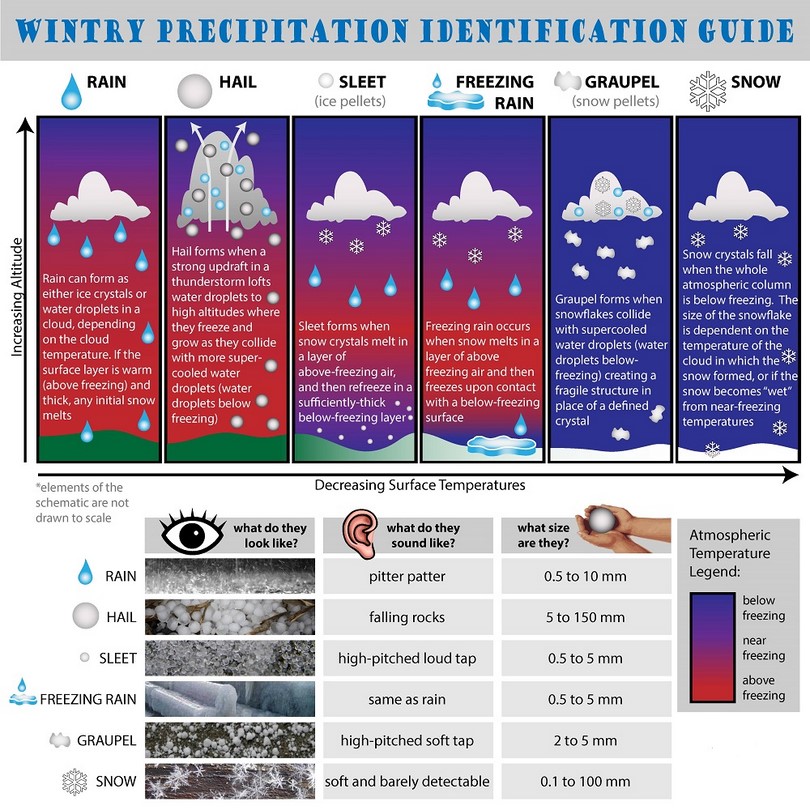
Temperature integrity
When it comes to winter storm preparedness, one of the most important steps is checking, confirming and beefing up the integrity of your home. This is not something that can be done over a short period, so it is imperative to get the ball rolling before winter season arrives. The first thing that you will be checking is the ability of your home to prevent the cold from getting in, as well as preventing the heat inside from getting out. Whatever you can do to make the atmosphere within your home more temperature stable will go a long way once the winter storm finally hits.
Have a look at the obvious spots first, such as the doors and windows. When these are closed, are the seals tight enough to trap the air? Many people will find that their homes are air leaky, and these gaps and breaches are going to cause problems once the storm hits.
Any cracks or gaps should be filled in with a sturdy material, such as caulk. The gaps between doors, door frames, windows and windows frames should be minimized using weather strips. If there has been buckling or bowing that has caused edges to no longer align, these should be repaired as soon as possible.
Make sure that insulation is being used properly and adequately throughout your home. At the very least, insulation should be used to create a temperature trapping layer in the attic area, as well as within the walls. To give yourself a fallback in the event the temperature finds a way inside your home, you can choose one particular room to be even more heavily insulated, so that you can retreat to that room if necessary.
It should also be possible to create an additional layer of protection on the exterior and interior sides of windows and doors, through the use of special covers or flaps that can be brought down and locked down in advance of a storm, or plastic sheeting. Towels and other similar material can be used to block any remaining gaps, during the storm itself.
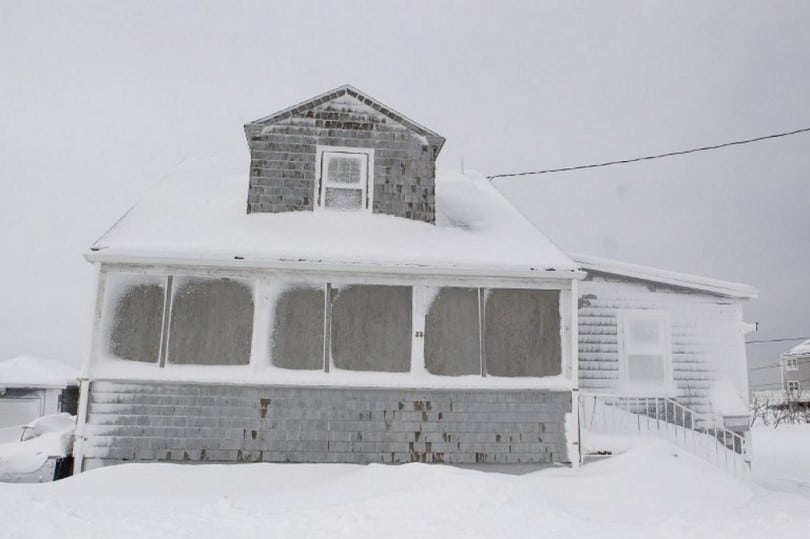
That said, it is also important to keep in mind that there is a certain danger that increases, once ventilation is hindered and the interior-exterior air exchange is curtailed. There could potentially be the buildup of dangerous substances inside the house, particularly carbon monoxide.
To guard against this, be especially mindful of the ventilation status and air quality in those areas where cooking or some other heating is taking place. Install carbon monoxide sensors all around your home, but particularly in those areas. This gas is invisible and has no scent, so you will need devices to detect any potential danger.
You can learn more about winterizing your home and other important aspects in our article on winter safety tips so make sure to take a look.
Structural integrity
Aside from the bitter cold that winter storms bring, another risk factor is the potentially significant amount of snowfall. People sometimes underestimate how quickly a storm can dump large amounts of snow in a particular area. This stuff has weight, and if enough of it is allowed to pile up in one place, disaster can strike. Since you and your loved ones will ideally be taking refuge indoors when the storm hits, it may not be possible to take action to spread around the snow during that time. This makes it even more important to prepare for this eventuality far in advance.
One key step is simply having a professional check the structural integrity of your roof surfaces. You want to learn how much weight the roof can bear before it will begin to cave in. Run various scenarios with the professional, which consider what might happen if huge amounts of snow are deposited on your home in a short span of time. If it looks like there is a reasonable risk of roof collapse that will mean that you will need to find ways to strengthen the support structure underneath the roof, as well as the roof material.
[the_ad_placement id=”in-text-2-type-r”]It’s also vital to give the snow a way to get off your roof or your home. Consider whether it makes sense to adjust the angles of parts of the roofing to make it easier for the slush to slide off. Given enough time, some of the snow may melt. Ideally, this should help to reduce some of the weight on top of your home. However, if the gutters and other drainage elements of your roof are clogged with debris, this will slow things down. That is not what you want to be happening. So make sure to clean out any debris on a regular basis, throughout the year.
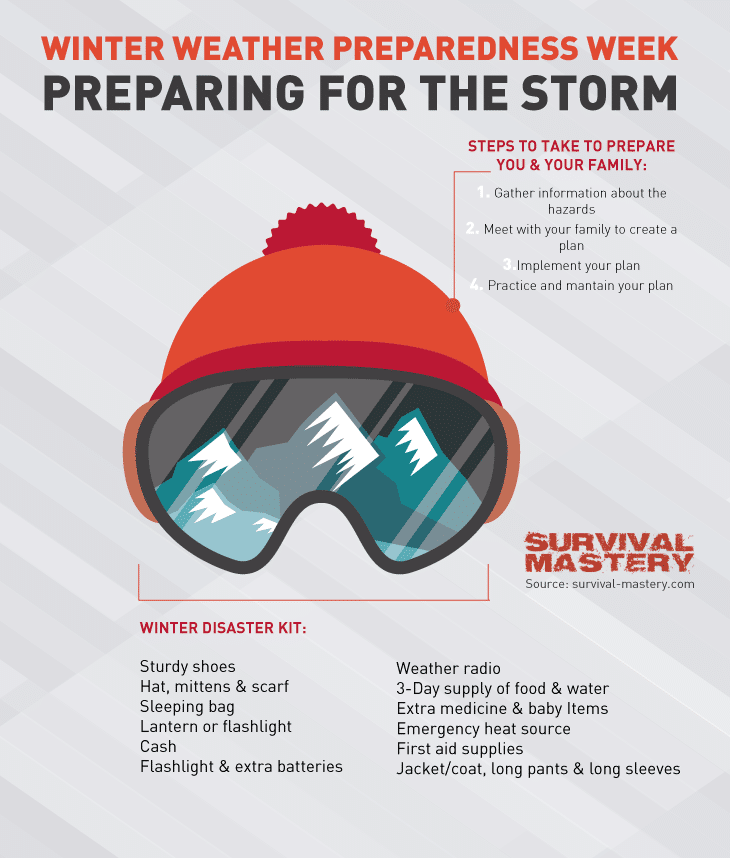
There are other structural issues that could also come into play. For instance, if there are trees located close to your roof, their branches and limbs could be torn off by the storm and flung onto your roof or home, causing damage. Consider whether it is feasible to transfer some of these trees a safer distance away.
If there are dead or dying branches, prune these regularly so that they don’t end up as downward projectiles when the storm arrives. The same is true for any other items located close by, which could fall onto the roof. Have a look around with an awareness of what might be too close to your roof.
The importance of self-sufficiency
One of the things that many people fear the most from a winter storm, is the sense of being cut off from the outside world. When a particularly strong storm hits, there’s a good chance that the power will go down. Other basics such as water, heat, telephone connections and the internet will also usually become unavailable.
If something goes wrong, it might not be possible to drive to a hospital because your vehicle will be buried in snow, and so will the roads. Emergency responders probably won’t be able to assist you. Walking around to get help will also not be an option. So you’re on your own.
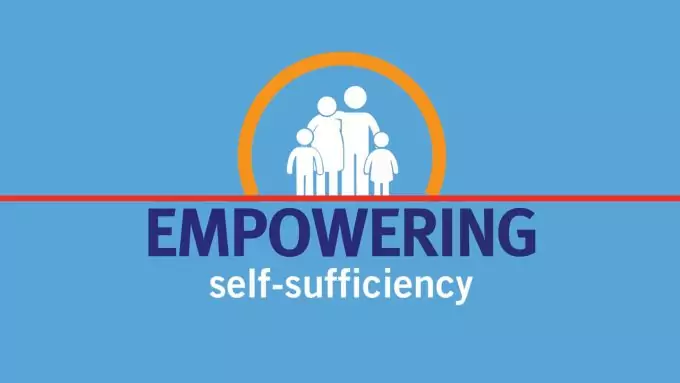
In a way, this type of situation emphasizes how dependent people have become on these things, and on being connected to the grid. Once people find themselves disconnected and cut off, many of them don’t know where to turn to.
However, being a survivalist precisely means that you set things up in advance so that in case of the worst, you can get by all on your own. This self-sufficiency will help see you through, even through terrible calamities and disasters. This begins with the basics, so it is important to build up a stock of drinking water, ready to eat food, important medications, and other useful supplies, such as shovels. You can learn more about storing food and other items from our guide and reviews on best prepper food and best survival kit.
Taking things further, power is going to be an issue. Even if your home has a solar or wind power generator, these may not work at all during the storm. However, there are other options to consider. It may be possible to use a bicycle or crank type generator to produce small amounts of power.
The downside though is that working up a sweat can be bad for heat retention, because of evaporating perspiration. You can also make use of an energy storage system composed of batteries, to amass a reserve amount of power while the electricity is still on. These can then be paired with low energy consumption devices, such as LEDs for lighting and a radio for staying on top of what is happening outside. However, having a portable generator in the house may be a fantastic idea in such times since these generators are easy to store and use. If you’re interested, please take a look at our reviews on the best portable generators to have in times of emergency.
Warmth is also an important consideration. It is best to avoid relying on flame based methods for warmth, if possible, because of the danger of carbon monoxide build up. This means that it is important to have clothing for each person that is designed to maximize heat generation and minimize heat loss.
There should be a go-to set of layers of different pieces of clothing for each person, including socks, gloves and something with a hood. There should also be sets of warm blankets, sheets, comforters and the like so that more warmth can be had, if necessary. These should all be stored securely, and somewhere easily accessible.
Short term prep: final steps
When news of an approaching winter storm becomes known, that is when the short term preparation should kick in. This will include many small but important steps. In fact, a checklist should be prepared and should be easy to refer to so that nothing vital is missed. You need to do a final check of the exterior of the house, looking for anything that could lead to structural damage.
Lock down any external window or door panels, or cover these with tough plastic sheeting on the outside as well as the inside. Check that there is nothing left outside that should be brought in. Then, you will run a final check of your current stock of supplies.
Make sure that there is sufficient food and drinking water to last you for three to four days, at least, if not a week or so. Make sure that the items in your stock remain in good condition, and have not yet expired. Put your manual can openers somewhere easily accessible.
Also make sure that you have a sufficient number of flashlights (Crank or shake flashlights can prove useful here.), batteries, power banks, maintenance and other medication, first aid supplies, additional supplies if you have a baby or pets, and the like. Test all equipment, such as the radio and flashlights, to make sure that they actually work. Also, it’s very important to buy high-quality equipment designed to last through an emergency. This means that you shouldn’t put your hope in a cheap flashlight that could go out at any time, especially considering the low temperatures. You should take a look at our reviews on best survival flashlights to understand the importance of such an item.
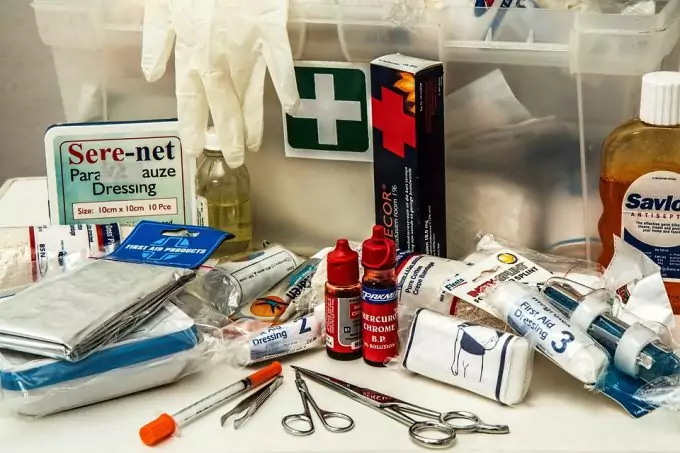
Other preparations also need to be made. Print out the contact information of neighbors, emergency services and loved ones. If possible, find out what the plans are of your friends, relatives and neighbors, so that you know how to coordinate and communicate if it will be necessary.
Make sure that you have a land line telephone that plugs into the wall, so that you can make phone calls if the telephone system remains operational, even if the power and mobile network services go out. Fill up containers such as pails, or even bathtubs with water, in case this will be useful later. Make sure to slightly open faucets and the like, to make it less likely for water in the pipes to freeze.
Charge all your mobile devices fully. Talk through your plan one more time with your family members and the people staying with you, so that you’re all on the same page. It may be difficult for people to be stuck in an enclosed space with others, so make sure that there are things for people to do, that do not require electricity. Have books and magazines on hand. A few board games or a deck of cards, could help to alleviate the boredom or stress of waiting. You can consider sharing walkies talkies with a neighbor or two, so that short range communication becomes possible.
Build your exit strategy
It is not ideal at all to be out on the road in the middle of a winter storm. However, there may be circumstances which will demand that you find a way to transport someone, who is in serious need of advanced medical attention. Preparation for this type of potential emergency must happen before the storm.
The vehicle needs to be prepared. If you have more than one vehicle, be sure to fill all their fuel tanks before the storm hits, and park them indoors, if possible, or somewhere relatively secure if no garage is available. Designate one vehicle to use in the event of an emergency. It should be the one which will best handle rough terrain and weather conditions. Also, make sure to read our piece on winter driving tips – they may save you a lot of trouble!
[the_ad_placement id=”in-text-3-type-r”]Stock the emergency vehicle with supplies. It should also contain food, water, warm blankets, flashlights, batteries, a radio, first aid kit, medication, a windshield scraper, jumper cables, flares, printed maps, tools, early warning devices or cones, and so on.
Make sure to withdraw a sufficient amount of cash before the storm arrives, in case banks will be closed and ATMs will not be functioning. Have all important documents secure and ready in one place, inside the house. This includes documents related to health issues and other medical conditions. This way, it will be easier to grab them and bring them along, in case of a health emergency.
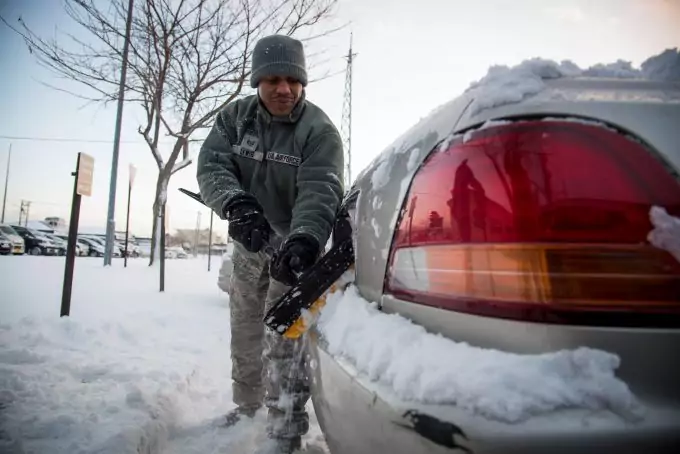
Know where the nearest hospital is, or the nearest location where you can get assistance. Have your shovels ready so that you can dig yourself out of the house, if necessary. Know how to improvise a stretcher or use existing furniture to transport someone, in case the person with the medical issue cannot walk or is unconscious. Make sure that the people who remain in the house have a clear idea of your route and your plan, so that they can provide this information to emergency personnel, just in case.
Then, proceed to drive slowly to the hospital or other destination. Ideally, at least one person in the family should have received training on how to drive in adverse weather conditions. This is something that should be looked into ahead of time, because this is the kind of skill that is gradually built up with constant practice.
As you drive, use the radio to stay aware of current weather conditions and any problems along the roads you will be taking. If possible, call ahead so that you will be expected, and maintain constant communication with the people back home, so that at least one person is aware of your status.
Are you really prepared?
The main takeaway here is that much of the preparation that needs to be done, has to happen way ahead of the storm. If someone only starts preparing while the storm is on its way, then he will be at a major disadvantage. However, if a household regularly builds its stock of food, water and other essentials throughout the year, and if they take steps to make the house as winterized as possible, then there’s less stress, less time pressure, and they will have a potentially more comfortable time, even if the storm is right outside.
Technology will have its role to play in this type of emergency. LEDs can keep the darkness at bay. Radios and walkie-talkies can prevent the sense of isolation from taking over. But at the same time, it is important to make sure that you can manage on your own, even if you’re disconnected from the grid.






I got caught under a snow and hail storm one time; it was painfully terrifying. I was on foot, but luckily, my home wasn’t that far ahead. When I arrived, I found the windows crashed, and the house was damaged. This experience made me want to be a prepper. Since then, I have transformed my house into a bunker and I’m still finding new, better ways to be prepared for these kinds of disasters.
We always keep a sturdy snow shovel in the house and in the trunk of the car. It is the best tool to have in a snow day. We make sure that we remain active to keep the blood flowing during winter storms, it isn’t the time to get snugly and comfortable, but to be alert and ready for the emergency.
I have a cabin in Minnesota and find that the cold and snow can be quite cumbersome to deal with. Being prepared is absolutely crucial, as is having high-quality gear. Many people try to save up on survival equipment, but in my opinion, that is a huge mistake.
Thank you Peter for sharing your opinion with us.